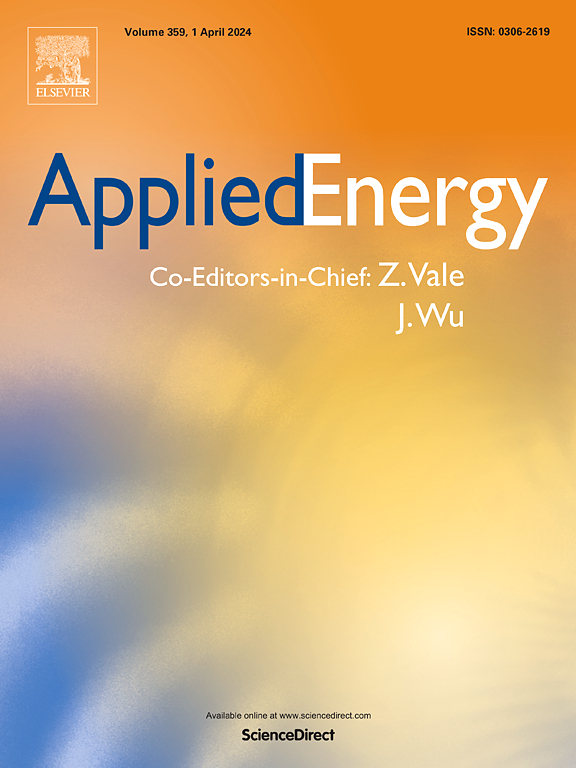Quantifying grid flexibility provision of virtual vehicle-to-vehicle energy sharing using statistically similar networks
IF 10.1
1区 工程技术
Q1 ENERGY & FUELS
引用次数: 0
Abstract
The rapid rise in electric vehicle (EV) adoption presents significant capacity challenges for power grids, but with effective charging management, EVs can also serve as flexible resources, underscoring the need for relevant innovative solutions. This paper proposes a virtual vehicle-to-vehicle (V-V2V) framework, enabling EVs to share energy with each other, either at public charging stations or home, as long as they are connected to the same distribution network. The framework eliminates the need for physical proximity and peer-to-peer matching seen in traditional V2V, enhancing grid flexibility and reducing capacity pressures by harmonizing EV charging with other demands and photovoltaic generation. To quantify the flexibility provision of the V-V2V framework, this paper implements and enhances the statistically similar networks method, where simulations are based on generated networks that share similar electrical and topological characteristics, rather than relying on a single network. Using graph theory, the method preserves statistical similarity in both electrical and topological features, along with their internal correlations, ensuring the practicality of the network simulations. To improve flexibility quantification accuracy, this paper introduces a bottom-up, high-granularity model of EV travel and plugging patterns that accounts for diverse user archetypes. Monte Carlo simulations are employed to provide a detailed analysis of travel and charging behaviors by categorizing EV users. The effectiveness of the proposed method is tested through numerical results using real-world UK distribution networks.
求助全文
约1分钟内获得全文
求助全文
来源期刊

Applied Energy
工程技术-工程:化工
CiteScore
21.20
自引率
10.70%
发文量
1830
审稿时长
41 days
期刊介绍:
Applied Energy serves as a platform for sharing innovations, research, development, and demonstrations in energy conversion, conservation, and sustainable energy systems. The journal covers topics such as optimal energy resource use, environmental pollutant mitigation, and energy process analysis. It welcomes original papers, review articles, technical notes, and letters to the editor. Authors are encouraged to submit manuscripts that bridge the gap between research, development, and implementation. The journal addresses a wide spectrum of topics, including fossil and renewable energy technologies, energy economics, and environmental impacts. Applied Energy also explores modeling and forecasting, conservation strategies, and the social and economic implications of energy policies, including climate change mitigation. It is complemented by the open-access journal Advances in Applied Energy.
 求助内容:
求助内容: 应助结果提醒方式:
应助结果提醒方式:


